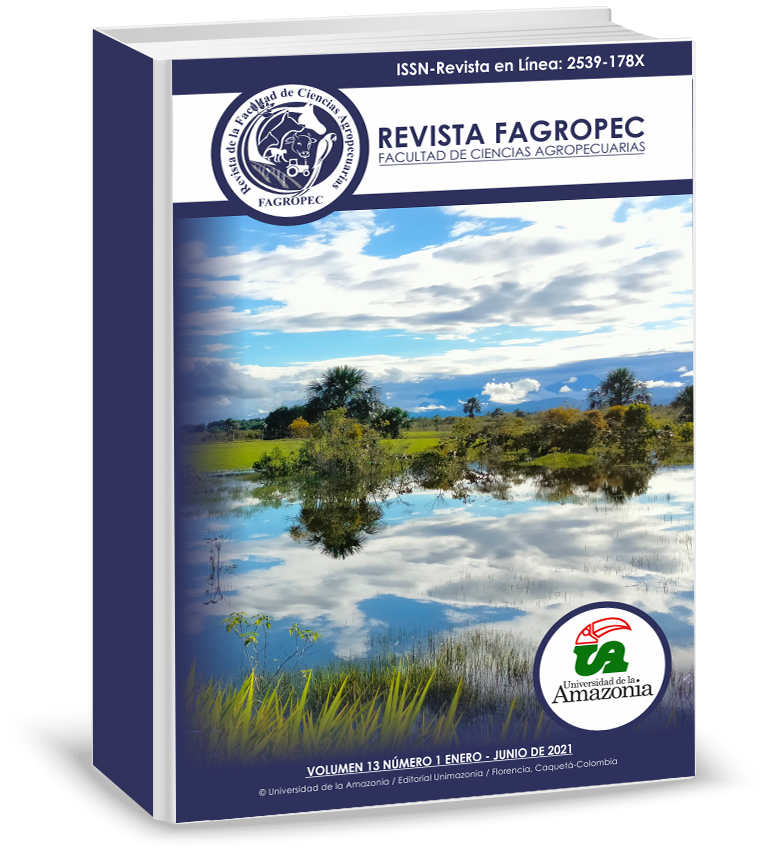MURCIÉLAGOS Y GANADERÍA: POSIBILIDADES EN LA ORINOQUIA Y AMAZONIA COLOMBIANA
DOI:
https://doi.org/10.47847/fagropec.v13n1a6Palabras clave:
agroecosistemas, Chiroptera, control biológico, servicios ecosistémicosResumen
La ganadería es importante para la economía colombiana y fundamental para la nutrición de su población, y esto también es cierto para sus regiones orinoquense y amazónica. Desafortunadamente, la ganadería ha tenido consecuencias ambientales negativas, incluyendo pérdidas de biodiversidad, y dichos impactos negativos tienen el potencial de comprometer la misma producción ganadera. Por ello la necesidad de incorporar la biodiversidad en esta actividad en esas regiones naturales ricas en biodiversidad. Con esto en mente, se revisó información relacionada con los beneficios prestados por los murciélagos en diferentes sistemas agrícolas y la interacción ganadería-murciélagos. La información consultada indica que los murciélagos son valiosos controladores de insectos plaga en múltiples sistemas agrícolas y hay ejemplos que sugieren que también lo hacen en sistemas ganaderos. Dada la riqueza de murciélagos insectívoros en la Orinoquia y Amazonia, hay un alto potencial para que ellos se conviertan en aliados de la ganadería en estas regiones. Para ello se recomienda: 1) realizar campañas pedagógicas para mejorar la actitud de los ganaderos hacia los murciélagos, 2) mantener o establecer controles específicos a los murciélagos vampiros, 3) analizar la dieta de murciélagos que pueden consumir especies plaga, 4) desarrollar estudios que permitan identificar cómo diferentes sistemas de producción y manejos del paisaje afectan la actividad y calidad de hábitat para los murciélagos, y 5) desarrollar experimentos para evaluar la adición de refugios artificiales para los murciélagos y experimentos de exclusión para determinar su valor para la ganadería.
Descargas
Referencias
Aguirre, L. F., Moya, M., Galarza, M. , Vargas, A., Barboza, K., Peñaranda, D., Perez, J., Terán,M. y Tarifa, T. (2010). Plan de acción para la conservación de los murciélagos amenazados de Bolivia. MMAA-VBCCGDF-DGB, BIOTA-PCMB, UICN-SSC-BSG, CBG-UMSS. https://n9.cl/fl8eb
Aizpurua, O., Budinski, I., Georgiakakis, P., Gopalakrishnan, S., Ibañez, C., Mata, V., Rebelo, H., Russo, D., Szodoray, F., Zhelyaskova, V., Zrnicic, V., Gilbert , M. & Alberdi, A.. (2018). Agriculture shapes the trophic niche of a bat preying on multiple pest arthropods across Europe: evidence from DNA metabarcoding. Molecular Ecology, 27(3), 815-825. https://doi.org/10.1111/mec.14474
Alkemade, R., Reid, R., van den Berg, M., de Leeuw, J., & Jeuken, M. (2014). Assessing the impacts of livestock production on biodiversity in rangeland ecosystems. Proceedings of the National Academy of Sciences, 110(52), 20900-20905. https://doi.org/10.1073/pnas.1011013108
Ancilloto, L., Ariano, A., Nardone, V., Budinski, I., Rydell, J. & Russo, D. (2017). Effects of freeranging cattle and landscape complexity on bat foraging: Implications for bat conservation and livestock management. Agriculture, Ecosystems and Environment, 241, 54-61. http://dx.doi.org/10.1016/j.agee.2017.03.001
Ancilloto, L., Festa, F., De Benedetta, F., Pejic, B. & Russo, D. (2021). Free-ranging livestock and a diverse landscape structure increase bat foraging in montainous landscapes. Agroforestry Systems 95, 407-418. https://doi.org/10.1007/s10457-021-00591-0
Benavides, J., Rojas Paniagua, E., Hampson, K., Valderrama, W. & Streicker, D. (2017). Quantifying the burden of vampire bat rabies in Peruvian livestock. PLoS Neglected Tropical Diseases, 11(12), e0006105. https://doi.org/10.1371/journal.pntd.0006105
Boyles, J. G., Cryan, P. M., McCracken, G. F. & Kunz, T. H. (2011). Economic importance of bats in agriculture. Science, 332(6025), 41-42. https://doi.org/10.1126/science.1201366 Braun de Torres, E., Brown, V., McCracken, G. & Kunz, T. (2019). Sympatric bat species prey opportunistically on a major moth pest of pecans. Sustainability, 11(22), 6365.
https://doi.org/10.3390/su11226365
Bredt, A., Uieda, W. & Pedro, W. (2012). Plantas e morcegos na recuperacao de áreas degradadas e na paisagem urbana. Rede de Sementes do Cerrado. https://n9.cl/kdkk
Burgin, C. J., Colella, J. P., Kahn, P. L. & Upham, N. S. (2018). How many species of mammals are there? Journal of Mammalogy, 99(1), 1-14. https://doi.org/10.1093/jmammal/gyx147
Bustamante, C. (2019). Gran Libro de la Orinoquia Colombiana. Instituto de Investigación de Recursos Biológicos Alexander von Humboldt - Deutsche Gesellschaft für Internationale Zusammenarbeit (GIZ) GmbH. http://repository.humboldt.org.co/handle/20.500.11761/35408
Calongue, B., Vela-Vargas, I. & Pérez-Torres, J. (2010). Murciélagos asociados a una finca ganadera en Córdoba (Colombia). Revista MVZ Córdoba, 15(1), 1938-1943. https://doi.org/10.21897/rmvz.331
Castillo-Figueroa, D., & Pérez-Torres, J. (2018). Respuestas funcionales de murciélagos asociados a fragmentos de bosque seco tropical en Córdoba (Colombia): implicaciones del tipo de manejo en sistemas de ganadería extensiva. Revista Biodiversidad Neotropical, 8(3), 197-211. http://dx.doi.org/10.18636/bioneotropical.v8i3.724
Cleveland, CJ, Betke, M., Federico, P., Frank, JD, Hallam, TG, Horn, J., López, JD, Jr, McCracken, GF, Medellín, RA, Moreno-Valdez, A., Sansone, CG, Westbrook, JK y Kunz, TH. (2006). Economic value of the pest control service provided by Brazilian free-tailed bats in south-central Texas. Frontiers in Ecology and the Environment, 4(5), 238-243. https://doi.org/10.1890/1540-9295(2006)004[0238:EVOTPC]2.0.CO;2
Costa, A., Silva, B., Jiménez-Navarroa, G., Barreiro, S., Melguizo-Ruiz, N., Rodríguez-Pérez, J., Vasconcelos, S., Beja, P., Moreira, F. & Herrera, J. (2020). Structural simplification compromises the potential of common insectivorous bats to provide biocontrol services against the major olive pest Prays oleae. Agriculture, Ecosystems and Environment, 287(1), 106708. https://doi.org/10.1016/j.agee.2019.106708
Costa, P., Medinas, D., Silva, B., Mira, A., Guiomar, N., Sales-Baptista, E., Ferraz-de-Olivera M., Simões, M., Belo, A. & Herrera, J. (2019). Cattle-driven forest disturbances impact ensemble composition and activity levels of insectivorous bats in Mediterranean wood pastures. Agroforestry Systems, 93, 1687-1699. https://doi.org/10.1007/s10457-018-0275-x
Cruz-Parrado, K., Moreno, G. & Sánchez, F. (2018). Dieta de Saccopteryx leptura (Chiroptera:Emballonuridae) en un área exurbana del piedemonte llanero colombiano. Revista Facultad de Ciencias Básicas, 14(2), 138-142. http://dx.doi.org/10.18359/rfcb.3255
Chacón, J., & Ballesteros, J. (2019). Mejor condición corporal de Artibeus lituratus en fragmentos de bosque seco asociados a sistemas silvopastoriles que en sistemas convencionales de ganadería en Córdoba, Colombia. Oecologia Australis, 23(3), 589-605. https://doi.org/10.4257/oeco.2019.2303.16
Chazdon, R., Harvey, C., Martínez-Ramos, M., Balvanera, P., Stoner, K., Schondube, J., Avila Cabadilla, L.D. & Flores-Hidalgo, M. (2011). Seasonally dry tropical forest biodiversity and conservation value in agricultural landscapes of Mesoamerica. In Dirzo, R., Young, H.S., Mooney, H.A. & Ceballos G. (Eds.), Seasonally dry tropical forests (pp. 195-219). Island
Press/Center for Resource Economics. https://doi.org/10.5822/978-1-61091-021-7_12
Downs, N., & Sanderson, L. (2010). Do bats forage over cattle dung or over cattle? Acta Chiropterologica, 12(2), 349-358. . https://doi.org/10.3161/150811010X537936
Ellis, E., Goldewijk, K., Siebert, S., Lightman, D. & Ramankutty, N. (2010). Anthropogenic transformation of the biomes, 1700 to 2000. Global Ecology and Biogeography, 19(5), 589-606. https://doi.org/10.1111/j.1466-8238.2010.00540.x
Escobar, L. E., Peterson, A. T., Favi, M., Yung, V., & Medina-Vogel, G. (2015). Bat-borne rabies in Latin America. Revista del Instituto de Medicina Tropical de Sao Paulo, 57(1), 63-72. https://doi.org/10.1590 /S0036-46652015000100009
Estrada-Villegas, S. & Ramírez, B. (2013). Bats of Casanare, Colombia. Chiroptera Neotropical, 19(3), 1-13. https://n9.cl/kmwn
Etter, A., Andrade, A., Saavedra, K., Amaya, P., Arevalo, P., Cortes, J., Pacheco, D, & Soler, D. (2017). Lista roja de ecosistemas de Colombia (Vers. 2.0). Pontificia Universidad Javeriana; Conservación Internacional Colombia. https://doi.org/10.13140/RG.2.2.10861.08165
Fey, R., Malavasi, U. & Malavasi, M. (2015). Silvopastoral system: a review regarding the family agriculture. Revista de Agricultura Neotropical, 2(2), 26-41. https://doi.org/10.32404/rean.v2i2.265
Garcés-Restrepo, M., Giraldo, A., López, C. & Ospina-Reina, N. F. (2016). Diversidad de murciélagos del campus Meléndez de la Universidad del Valle, Santiago de Cali, Colombia. Boletin Científico Centro de Museos, 20(1), 116-125. https://doi.org/10.17151/bccm.2016.20.1.9
Gras, P., Tscharntke, T., Maas, B., Tjoa, A., Hafsah, A. & Clough, Y. (2016). How ants, birds and bats affect crop yield along shade gradients in tropical cacao agroforestry. Journal of Applied Ecology, 53(3), 953-963. https://doi.org/10.1111/1365-2664.12625
Harvey, C. A. & González-Villalobos, J. A. (2007). Agroforestry systems conserve species-rich but modified assemblages of tropical birds and bats. Biodiversity and Conservation, 16, 2257-2292. https://doi.org/10.1007/s10531-007-9194-2
Harvey, C., Komar, O., Chazdon, R., Ferguson, B., Finegan, B., Griffith, D., Martínez-Ramos, M., Morales, H., Nigh, R., Soto-Pinto, L., Van Breugel, M. & Wishnie, M. (2008). Integrating agricultural landscapes with biodiversity conservation in the Mesoamerican hotspot. Conservation Biology, 22(1), 8-15. https://doi.org/10.1111/j.1523-1739.2007.00863.x
Hernández-Leal, F., Sánchez, F. & Lizcano, D. J. (2021). Murciélagos insectívoros aéreos en un paisaje ganadero del piedemonte llanero colombiano. Biota Colombiana, 22(1), 15-33. https://doi.org/10.21068/c2021.v22n01a11
IDEAM, MADS & UDCA. (2015). Síntesis del estudio nacional de la degradación de suelos por erosión en Colombia - 2015. MADS- IDEAM - MADS. https://n9.cl/h0vr
Jones, G. & Rydell, J. (2003). Attack and defense: interactions between echolocating bats and their insect prey. In T. H. Kunz & M. B. Fenton (Eds.), Bat ecology (pp. 301-345). The University of Chicago Press. https://n9.cl/nejf
Kalka, M. & Kalko, E. (2006). Gleaning bats as underestimated predators of herbivorous insects: diet of Micronycteris microtis (Phyllostomidae) in Panama. Journal of Tropical Ecology, 22(1), 1-10. https://doi.org/10.1017/S0266467405002920
Karp, D. S. & Daily, G. (2014). Cascading effects of insectivorous birds and bats in tropical coffe plantations. Ecology, 95(4), 1065-1074. https://doi.org/10.1890 / 13-1012.1
Kemp, J., López-Baucells, A., Rocha, R., Wangensteen, O. S., Andriatafika, Z., Nair, A. & Cabeza, M. (2019). Bats as potential suppressors of multiple agricultural pests: A case study from Madagascar. Agriculture, Ecosystems and Environment, 269, 88-96. https://doi.org/10.1016/j.agee.2018.09.027
Kunz, T., Braun de Torrez, E., Bauer, D., Lobova, T. & Fleming, T. (2011). Ecosystem services provided by bats. Annals of the New York Academy of Sciences, 1223(1), 1-38. https://doi.org/10.1111 / j.1749-6632.2011.06004.x
Kunz, T., Whitaker, J. & Wadanoli, M. (1995). Dietary energetics of the insectivorous Mexican freetailed bat (Tadarida brasiliensis) during pregnancy and lactation. Oecologia, 101(4), 407-415. https://doi.org/10.1007 / BF00329419
Lee, D., Papes, M. & van den Bussche, R. (2012). Present and potential future distribution of common vampire bats in the Americas and the associated risk to cattle. PLoS ONE, 7(8), e42466. https://doi.org/10.1371/journal.pone.0042466
Lerner, A., Zuluaga, A., Chará, J., Etter, A. & Searchinger, T. (2017). Sustainable cattle ranching in practice: moving from theory to planning in Colombia's livestock sector. Environmental Management, 60 (2), 176-184. https://doi.org/10.1007/s00267-017-0902-8
Lobova, T., Geiselman, C. & Mori, S. (2009). Seed dispersal by bats in the Neotropics. The New York Botanical Garden Press. https://n9.cl/ybz2t
Long, R., Kiser, W. & Kiser, S. (2006). Well-placed bat houses can attract bats to Central Valley farms. California Agriculture, 60(2), 91-94. https://escholarship.org/uc/item/9bs900wj.
Maas, B., Clough, Y. & Tscharntke, T. (2013). Bats and birds increase crop yield in tropical agroforestry landscapes. Ecology Letters, 16(12), 1480-1487. https://doi.org/10.1111/ele.12194.
Maas, B., Karp, D., Bumrungsri, S., Darras, K., Gonthier, D., Huang, J., Lindell, C., Maine, J., Mestre, L., Michel, N., Morrison, E., Perfecto, I., Philpott, S., Sekercioglu, C., Silva, R., Taylor, P., Tscharntke,T., Van Bael, S, Whelan, C. & Williams-Guillén, K. (2015). Bird and bat predation services in tropical forests and agroforestry landscapes. Biological Reviews, 91(4), 1081-1101. https://doi.org/10.1111/brv.12211
Maas, B., Tscharntke, T., Tjoa, A., & Anshary, A. (2018). Effects of ecosystem services provided by birds and bats in smallholder cacao plantations of central Sulawesi. Göttingen University Press. https://n9.cl/7gqec
Maxwell, M., Freire de Carvalho, M., Hoet, A., Vigilato, M., Pompei, J., Cosivi, O. & del Rio Vilas, V. (2017). Building the road to a regional zoonoses strategy: A survey of zoonoses programmes in the Americas. PLoS ONE, 12(3),1-19. . https://doi.org/10.1371/journal.pone.0174175
Mora, M., Ríos, L., Ríos, L. & Almario, J. (2017). Impacto de la actividad ganadera sobre el suelo en Colombia. Ingeniería y Región, 17, 1-12. https://doi.org/10.25054/issn.2216-1325
Morales-Martínez, D., Rodríguez-Posada, M., Fernández-Rodríguez, C., Calderón-Capote, M. & Gutierrez-Sanabria, D. (2018). Spatial variation of bat diversity between three floodplain-savanna ecosystems of the Colombian Llanos. Therya, 9(1), 41-52. https://doi.org/10.12933/therya-18- 537.
Morrison, E. & Lindell, C. (2012). Birds and bats reduce insect biomass and leaf damage in tropical forest restoration sites. Ecological Applications, 22(5), 1526-1534. https://doi.org/10.1890/11- 1118.1.
Pérez-Torres, J., Sánchez-Lalinde, C. & Cortés-Delgado, N. (2009). Murciélagos asociados a sistemas naturales y transformados en la Ecorregión Eje Cafetero. En J. M. Rodríguez, J. C. Camargo, J. Niño, A. M. Pineda, L. M. Arias, M. A. Echeverry & A. Miranda (Eds.). , Valoración de la biodiversidad en la Ecorregión del Eje Cafetero. Publiprint Ltda. https://n9.cl/y1rbt.
Peri, P., Dube, F. & Varela, A. (2016). Silvopastoral Systems in Southern South America. Springer. https://doi.org/10.1007/978-3-319-24109-8.
Puig-Montserrat, X., Torre, I., López-Baucells, A., Guerreieri, E., Monti, M., Ràfols-García, R., Ferrer, X., Gisbert, D. & Flaquer, C. (2015). Pest control service provided by bats in Mediterranean rice paddies: linking agroecosystems structure to ecological functions. Mammalian Biology, 80(3), 237-245. https://doi.org/10.1016/j.mambio.2015.03.008.
Racero-Casarrubia, J., Pinedo-Hernández, J., Ballesteros-Correa, J. & Marrugo-Negrete, J. (2017). Metales pesados en especies de murciélagos (Quiróptera) asociados a una finca bajo manejo silvopastoril en el departamento de Córdoba, Colombia. Acta Zoologica Mexicana, 33(1), 45-54. https://n9.cl/fr6ju
Ramankutty, N., Graumlich, L., Achard, F., Alves, D., Chhabra, A., DeFries, R., Foley, J., Geist, H., Houghton, R., Goldewijk, K., Lanbin, E., Millington, A., Rasmussen, K., Reid, R. & Turner, B.. (2006). Global Land-Cover Change: Recent Progress, Remaining Challenges. In E. F. Lambin & H. J. Geist (Eds.). Land-use and land-cover change (pp.. 9-39). Springer.
https://link.springer.com/chapter/10.1007/3-540-32202-7_2
Ramírez-Chaves, H., Noguera-Urbano, E. & Rodríguez-Posada, M. (2013). Mamíferos (Mammalia) del departamento de Putumayo, Colombia. Revista de la Academia Colombiana de Ciencias Exactas, Físicas y Naturales, 37(143), 263-286.
https://raccefyn.co/index.php/raccefyn/article/view/9/9
Ramírez-Mejía, A., Urbina-Cardona, J. N. & Sánchez, F. (2020). Functional diversity of phyllostomid bats in an urban–rural landscape: a scale-dependent analysis. Biotropica, 52(6), 1168-1182. https://doi.org/10.1111/btp.12816
Reeder, D. & Moore, M. (2013). White-nose syndrome: a deadly emerging infectious disease of hibernating bats. In R. A. Adams & S. C. Pedersen (Eds.). Bat Evolution, Ecology, and Conservation (pp. 413-434). Springer Science+Business Media. https://doi.org/1010.1007/978-1- 4614-7397-8_20
Rivas-Pava, P., Sánchez-Palomino, P. & Cadena, A. (1996). Estructura trófica de la comunidad de quirópteros en bosques de galeria de la Serranía de la Macarena (Meta - Colombia). In H. H. Genoways & R. J. Baker (Eds.). Contributions in Mammalogy: a memorial volume honoring (pp. 237-248). Museum of Texas Tech University.
Romero-Ruiz, M., Flantúa, S., Tansey, K. & Berrio, J. (2012). Landscape transformations in savannas of northern South America: Land use/cover changes since 1987 in the Llanos Orientales of Colombia. Applied Geography, 32(2), 766-776. https://doi.org/10.1016/j.apgeog.2011.08.010.
Rosenzweig, M. L. (2003). Win-win ecology: how Earth's species can survive in the midst of human enterprise. Oxford University Press. https://doi.org/10.1017/S0030605304210419.
Sánchez, F. (2011). La heterogeneidad del paisaje del borde norte de Bogotá (Colombia) afecta la actividad de los murciélagos insectívoros. Revista U.D.C.A. Actualidad & Divulgación Científica, 14(1), 71-80. https://doi.org/10.31910/rudca.v14.n1.2011.759.
Sánchez, F. (2017). Murciélagos de Villavicencio (Meta, Colombia): evaluación preliminar de su diversidad trófica y servicios ecosistémicos. Boletín Científico, Centro de Museos, Museo de Historia Natural, 21(1), 96-111. https://doi.org/10.17151/bccm.2017.21.1.8
SINCHI, I. A. (2007). Balance anual sobre el estado de los ecosistemas y el ambiente de la amazonia colombiana 2006. Instituto Amazónico de Investigaciones Científicas –Sinchi. https://n9.cl/z5u8
Sociedad Colombiana de Mastozoología. (2017). Lista de referencia de especies de mamíferos de Colombia. Versión 1.2. SIP Colombia. Conjunto de datos/Lista de especies. http://doi.org/10.15472/kl1whs.
Thompson, R., Mitchel, G. & Burns, R. (1972). Vampire bat control by systemic treatment of livestock with an anticoagulant. Science, 177(4051), 806-808. https://doi.org/10.1126/science.177.4051.806
Tschapka, M. & Dressler, S. (2002). Chiropterophily: on bat-flowers and flower-bats. Curtis's Botanical Magazine (Series 6), 19(2), 114-125. http://www.jstor.org/stable/45065530
Tuttle, M. D., Kiser, M., & Kiser, S. (2004). The bat house builder's handbook. Bat Conservation International.
UNEP. (2010). Latin America and the Caribbean: Environment Outlook-GEO LAC 3. United Nations Environment Programme. http://hdl.handle.net/20.500.11822/8663
Vela-Vargas, I. & Pérez-Torres, J. (2012). Murciélagos asociados a remanentes de bosque seco tropical en un sistema de ganadería extensiva (Colombia). Chiroptera Neotropical, 18(1), 1089- 1110. https://pesquisa.bvsalud.org/portal/resource/pt/vti-464684.
Whitaker, J. (1995). Food of the big brown bat Eptesicus fuscus from maternity colonies in Indiana and Illinois. The American Midland Naturalist, 134(2), 346-360. https://doi.org/10.2307/2426304.
Williams-Guillén, K., Perfecto, I. & Vandermeer, J. (2008). Bats limit insects in a Neotropical agroforestry system. Science, 320(5872), 70. https://doi.org/10.1126/science.1152944
Publicado
Número
Sección
Licencia

Esta obra está bajo una licencia internacional Creative Commons Atribución-NoComercial-CompartirIgual 4.0.
























